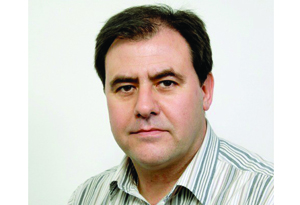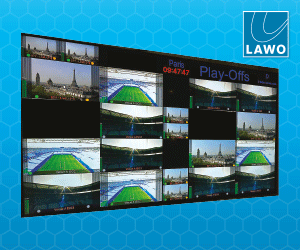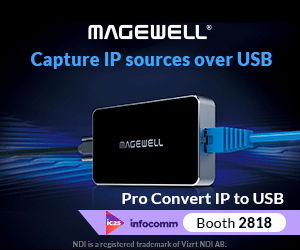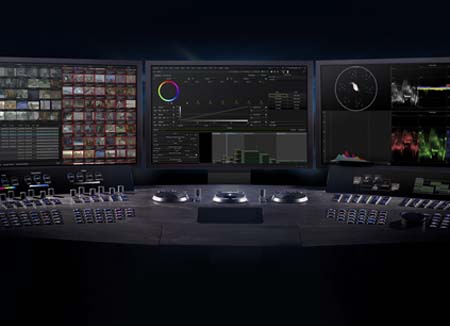Post production is now completely non-linear and fully collaborative, allowing different departments to work on the same content simultaneously, thereby simplifying workflow and improving production quality Post production was a mechanical process in the good old days. Films were made scene by scene, shot by shot, and editors cut the celluloid to use the best […]
Post production is now completely non-linear and fully collaborative, allowing different departments to work on the same content simultaneously, thereby simplifying workflow and improving production quality
Post production was a mechanical process in the good old days. Films were made scene by scene, shot by shot, and editors cut the celluloid to use the best takes with the right rhythm to tell a story. Visual effects were processed with time-consuming optical printers, and colour correction was just that correcting different colour responses to get a consistent look. Using light valves as the inter-positive was made from the cut negative.
As post moved from film to digital, the concept remained the same. The editor created the finished cut to tell the story, the visual effects were added, and the end result was colour corrected. Modern digital tools allowed for more creative use of colour control, but it was still a separate process, normally the last one in the chain.
The continuing development of technology, and processing power in particular, has led to two major changes in the way content is handled during post production. Firstly, the content is stored and manipulated as a digital file, rather than as a linear stream. This makes exchange of content between devices simpler. Secondly, the increase in raw processing power means each stage of post is non-destructive, which means the original content is retained, and all we are doing is assembling a set of instructions on how to treat that content. The availability of more processing power means that those sets of instructions can be implemented in real-time so we can see what we are doing as we compile the post.
The result is that post now is truly non-linear, and fully collaborative. Each department can work on the same piece of content, simultaneously. Changes applied in one suite are reflected in all the others, but they do not have any effect on the way other artists work because each suite compiles its own set of instructions.
Compiling colour correction
If we look at colour manipulation as one element of the process for the moment, we can see that this idea of collaborative workflow can begin even before the rushes reach the post house.
Most movies and commercials today are shot using digital cinematography cameras rather than film cameras. This enables the director and DoP to see what has been shot, immediately.
Digital cinematography cameras are designed to create a high contrast image, allowing for plenty of headroom for the colourist to work with. Viewing this output directly from the camera on a conventional HD monitor, though, results in a very flat, low contrast image.
Some directors live with this and learn to interpret the flat pictures. A vast majority of directors, however, expect to see the finished image in a replay on set, to get a better idea of how the shot will fit into the overall look of the project.
The simplest way to achieve this is to have colour grading tools on set to process the raw footage instantly. This can be achieved using a dailies system like Baselight TRANSFER, or an on-set colour visualisation system like the FilmLight FLIP, which applies lookup tables, grades and filter effects to the live output of your camera while you are shooting on set and adjust to achieve the directors vision.
This can be operated by the productions digital intermediate technician (DIT) or, on a major project, by one of the colourist teams responsible for finishing the project. When using FLIP, the senior colourist creates pre-set looks to help the DIT achieve what the director wants on location.
What is important to remember is that, whichever tool is being used, the colour grading imposed on set is reflecting the wishes of the director, so it is worth preserving that information to help when the scene gets to the colour suite in the post house. Remember that this is non-destructive colour grading and we are retaining the original output of the camera and compiling metadata that communicates with the processor about how to adapt the colour balance.
That metadata is a colour decision list, just as an offline editor would produce an edit decision list. In both the cases the metadata will be amended and expanded in the finishing of the movie, but they provide a solid foundation to work on.
Colour assurance
Before moving on to the post house, there is one more important consideration. Viewing conditions on set, usually on an HD monitor, will be different to that in the grading suite and will be different again to the target display, which might be a cinema projector for a movie.
Starting colour correction on set is only of value if the monitor itself is not adding its own colour distortion. The sort of low cost, high brightness LCD display used on set will have different colour curves to the grading monitor in the post house, which may not precisely match digital projection standards. Different manufacturers have subtle differences in colour gamut.
You have to establish a reference standard, then calibrate each display to that reference. Again, advances in processing power make this practical. Small differences in colour response can be corrected using three-dimensional LUTs (look-up tables), which shift the signals appropriately so that any connected display looks like the reference.
Each display needs to be calibrated once and the required connections are stored in a system. The result is not to create identical displays but to have displays that offer a well-matched colour response.
Collaboration

Once the material gets to the post house, everyone can start working on images that look the way the director intended. Editors can focus on telling the story without being distracted by jumps in the way the scenes look. Visual effects designers can create computer-generated elements knowing they will blend into live action.
In the grading suite, the colourist can start refining the look of the project. Because it is non-linear, the colourist can pick up all the scenes at the same location and grade them for consistency, or look at the elements of a complex effect shot to ensure they fit together.
As well as achieving a better look, the ability to match each element for colour means that there is less need for manual work at the compositing stage. What would once have gone into a visual effects suite to make a shot work can now be composed and finished in Baselight, even when it contains many layers of CGI and mattes. The colourist can work on individual layers to ensure it looks right when combined.
Collaborative workflows also mean what was once a solo task can now be split. A lead colourist, for example, could set the look for a production that is then implemented by an assistant colourist, freeing up time for the lead colourist to finesse and refine the final look.
This is not just for major movie productions collaborative workflows can also be valuable on lower-budget projects where there is a need to process the work quickly. The German production house GrundyUFA, for example, simultaneously produces four daily dramas, each with as many as 50 standing sets.
Each time a production unit moved to a new set, a large amount of time was lost in lighting and calibrating cameras, which made the demanding schedules even harder to achieve. The solution was to use Baselight FLIP, loaded with references scenes that are used to apply the normal correction to the camera output.
The DoP can instantly see if the lighting and camera settings are correct, and quickly make adjustments if necessary, either to the lighting or to the colour grade. The result is a huge practical saving in time and cost on routine daily drama, using the same principles of collaborative workflow which stretch from the point of origin to the point of delivery.
It underlines the way that the real benefits of file-based content are finally being delivered through collaborative workflows relying on metadata-driven, non-destructive processing. In post production this results in a transformation by eliminating repetitive tasks, making the process more dynamic, and ultimately reducing costs while delivering better quality and more creative freedom.
Mark Burton is the Marketing Director of FilmLight.














































































.jpg)

